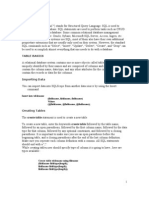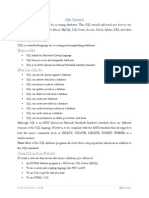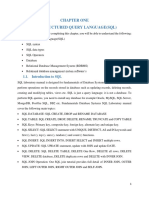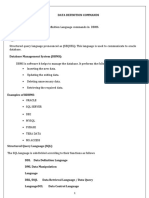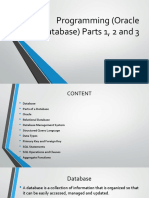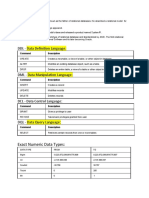0% found this document useful (0 votes)
9 views94 pagesWant Complete PDF? Download From Our Telegram Channel @curious - Coder
The document provides an overview of SQL commands, including Data Definition Language (DDL), Data Manipulation Language (DML), Data Control Language (DCL), and Transaction Control Language (TCL). It discusses SQL clauses such as GROUP BY, HAVING, ORDER BY, and WHERE, explaining their purposes and providing examples. Additionally, it covers SQL Joins, including INNER JOIN, LEFT JOIN, RIGHT JOIN, and FULL JOIN, detailing how they combine data from multiple tables.
Uploaded by
adars251Copyright
© © All Rights Reserved
We take content rights seriously. If you suspect this is your content, claim it here.
Available Formats
Download as PDF, TXT or read online on Scribd
0% found this document useful (0 votes)
9 views94 pagesWant Complete PDF? Download From Our Telegram Channel @curious - Coder
The document provides an overview of SQL commands, including Data Definition Language (DDL), Data Manipulation Language (DML), Data Control Language (DCL), and Transaction Control Language (TCL). It discusses SQL clauses such as GROUP BY, HAVING, ORDER BY, and WHERE, explaining their purposes and providing examples. Additionally, it covers SQL Joins, including INNER JOIN, LEFT JOIN, RIGHT JOIN, and FULL JOIN, detailing how they combine data from multiple tables.
Uploaded by
adars251Copyright
© © All Rights Reserved
We take content rights seriously. If you suspect this is your content, claim it here.
Available Formats
Download as PDF, TXT or read online on Scribd
/ 94





















